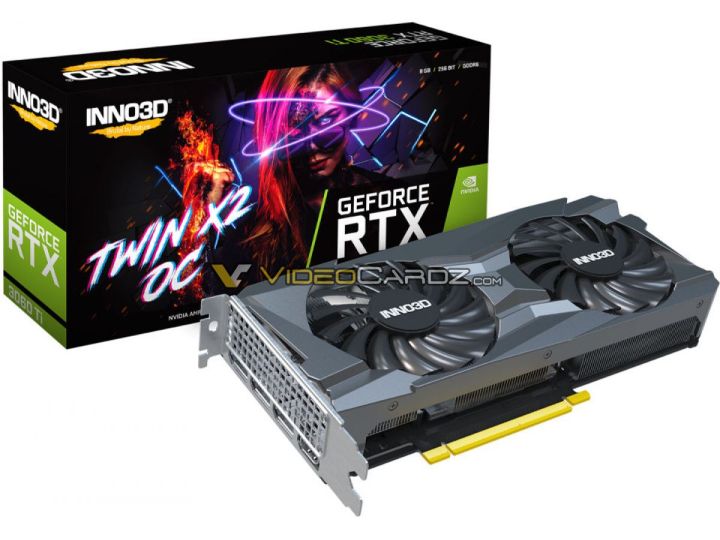Nvidia has launched its GeForce RTX 3000 series graphics cards with a trio of models — a flagship RTX 3080, a midrange RTX 3070, and an enthusiast class RTX 3090 — and we soon may see a fourth model joining the family. Nvidia partners Inno3D, Asus, MSI, Zotac, and others have listed new, unannounced GeForce RTX 3060 Ti custom cards, suggesting that Nvidia may have a low-to-midrange entry in the RTX 3000 lineup ready to compete against rival AMD’s recently announced Radeon RX 6000 series.
Though unconfirmed by Nvidia, industry observers expect that the RTX 3060 Ti will make its debut on December 2, and the listings from the GPU maker’s partners seemingly confirm that the cards will launch soon. Hopefully, Nvidia will have worked out its supply constraints to minimize the kind of issues with shortages that were experienced by potential buyers when its premium cards launched.

Our closest glimpse of the RTX 3060 Ti comes by way of a recent leak from VideoCardz that was reported by Wccftech. It shows the card with a triple-fan design and angular, industrial aesthetics, complete with machined metal accents and matte black plastic surfaces. The fans each contain 12 blades, and it’s unclear what connectors will be used from the angle of the photo. This model is part of the iChill X3 lineup.

A second Inno3D listing features a more rectangular and simple card with a dual-fan design, aluminum heat sink, and metal cover. The card will come with one HDMI port and three DisplayPort connectors, according to the image. It is expected that this Twin X2 card will retail close to MSRP for the RTX 3060 Ti, while the iChill X3 will have a more premium price. At this time, pricing is not yet known, but a price around $399 seems likely.
The GeForce RTX 3060 Ti will use a new GA104 GPU — Nvidia’s first three RTX 3000 cards used a GA102 GPU, for reference — that is expected to feature 4,684 CUDA cores, 80 ROPs, and a base clock speed of 1,410 MHz. These cards are expected to reach up to 1,665 MHz boost speeds. With these specifications, the card would be capable of 16.2 TFLOPs of compute power. Like the RTX 3070, these cards are expected to feature 8 GB of GDDR6 memory on a 256-bit bus. This would give the card a bandwidth of 448 GB per second.
Prior to this leak, MSI registered a number of variants of the RTX 3060 Ti with the Eurasian Economic Commission (EEC). They’re split between its Ventus Gaming lineup and its Twin Fan family, according to a report from Hot Hardware, and include the MSI GeForce RTX 3060 Ti Gaming Trio, MSI GeForce RTX 3060 Ti Gaming X Trio, MSI GeForce RTX 3060 Ti Ventus 2X OC, MSI GeForce RTX 3060 Ti Ventus 2X, MSI GeForce RTX 3060 Ti Twin Fan OC, MSI GeForce RTX 3060 Ti Twin Fan, MSI GeForce RTX 3060 Ti Ventus 3X OC, and MSI GeForce RTX 3060 Ti Ventus 3X.
Gigabyte also registered several models with the EEC in late September. Twitter user @harukaze5719 revealed that Zotac is also working on its Twin Edge variant.
Asus also has a number of listings of its RTX 3060 Ti models — close to 20 in total. That could suggest stock problems won’t be as prevalent with this more mainstream GPU.



